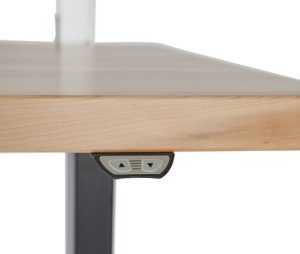
Many businesses have recouped the benefits of an ergonomic facility. When applying ergonomics correctly, the return on investment can make all the difference. Understanding the value of ergonomics on a multi-faceted approach is paramount in achieving a successful business nowadays. Ergonomics can have multiple benefits including increasing manufacturing performance, enhancing product quality, improving health, decreasing injury, and improving employee engagement. It is becoming very well known throughout business what ergonomic friendly workplaces can achieve, but ergonomics is often overlooked and underappreciated. Many individuals only have a limited understanding, especially leadership, stakeholders/shareholders, investors, and board members. It is not just an expense or a cost to the business, it is on numerous levels quantifiable to business performance (McGowan, 2019).
Defining Ergonomics
Definitions from the CDC and other federal agencies may also limit the understanding of ergonomics. The CDC’s definition, which is solely healthcare and not business based, defines it as to prevent soft-tissue injuries and Musculoskeletal Disorders (MSD’s) caused by sudden or sustained exposure to force, vibration, repetitive motion and awkward posture. On the other hand, Human Factors and Ergonomics Society (HFES, 2006), as well as the International Ergonomics Association (IEA 2013), delivers another definition for stakeholders (Bossen, The Sit-Stand Paradigm, hubspot.net).
Ergonomics (or human factors) is the scientific discipline concerned with the understanding of interactions among humans and other elements of a system, and the profession that applies theory, principles, data, and methods to design in order to optimize human well-being and overall system performance. (McGowan, 2019).
Applying Ergonomics
“Workers who are not working efficiently, who are experiencing discomfort, or who are straining to complete their work tasks often do not do their best work” (Kansas Manufacturing Solutions, 2018-Blog).
In this situation, it is not only the worker who is impacted but the entire business. From the worker’s injuries and time-off for the employee to managers replacing inexperienced workers that may decrease quality and production time, to HR work with claims and disability, as well as Payroll with overtime for employees who cover for the injured worker, the effects of poor ergonomics add up.
By applying ergonomics effectively, profits and costs can improve employee satisfaction and reduce injuries, improve productivity and uphold quality. Most workplaces do not have an either/or option of sitting or standing. The first step in changing this paradigm is to make the workplace a healthy combination of seated and standing positions.
Benefits of Ergonomics
The Bureau of Labor Statistics has reported that US adults spend between 8-9 hours a day in a seated position, mainly at work, which can have negative musculoskeletal disorders. Height adjustable workstations are becoming more prevalent in work environments. Studies have repeatedly shown different periods between sitting and standing helps reduce pain and fatigue, as well as overall well-being and productivity in the workplace. Companies are now more than ever rethinking the sit-stand predicament
A community-based study in 2011 by the Center for Disease Control and Prevention asked groups in a “Take-a-Stand Project” about using sit to stand positions utilizing sit-stand devices. The overall results showed reduced upper back & neck pain and improvement in mood. Further results show that 87% had increase comfort and felt energized, 71% were more focused, 66% were more productive and 62% felt happier and 33% felt less stress. Additionally, when the sit-stand devices were taken away, all of the noticed improvements were largely gone in a two-week time frame (Bossen, The Sit-Stand Paradigm, hubspot.net).
Increasing Return on Investment (ROI)
Costs of personal and worker compensation can be expensive for a business. According to a study done by OHSA regarding ergonomic success stories for height adjustable workstations, they had several major improvements. In an electronic assembly factory, sick leave duration went from 22.9 days to 1.8 days. In a computer manufacturing facility using both training and evaluations with sit-stand workstations and adjustable keyboard/mouse surfaces, the upper limb disorders were down 41%. Another study at an electronic assembly facility showed that when work was performed in a seated or standing position the employee turnover rate decreased from 30.1% to 7.6% and lost workdays down from 57% over 12 years. It cost this business $57,000 to employ the new ergonomic work environment and saved them almost $500,000.
Also, in a study, Springs Window fashions manufacturing setting height adjustable tables were redesigned to make it easier to raise/lower the table, along with fatigue mats and footrests. Out of 80 workers, compensable claims went from 20 per year down to 2 claims over 5 years. In another study performed at UPS with office sit-stand workstations, Musculoskeletal Disorders (MSD) were down 50%, costs were down 100%, and body part discomfort decreased by 62% (www.psffes.org).
A study in 2011 compared the MSD’s cost on two comparable employee groups (User Group and Non-adjustable Group-100 workers altogether). There was a three-fold increase in the cost for the employees in the Non-adjustable group when comparing total costs of personal and worker compensation costs. When reviewing the total cost for MSD work-related costs, they experienced a 20X increase in costs for the Non-adjustable Group versus the User-Adjustable group (Bossen, hubspot.net).
 Bossen, Drew. The Sit-Stand Paradigm: Increasing Workplace Health and Productivity. Atlas Ergonomics, LLC. Hubspot.net.
Bossen, Drew. The Sit-Stand Paradigm: Increasing Workplace Health and Productivity. Atlas Ergonomics, LLC. Hubspot.net.In addition to saving costs in an ergonomic facility, there are other benefits that should be greatly considered, including improving employee engagement.
“A workplace that is designed to meet other people’s needs demonstrates the employer’s commitment and encourages employees to be fully engaged” (McGowan, 2019).
Staying competitive in any industry is a challenge and implementing ergonomics, including height adjustable tables in the workplace is crucial to maintaining employee well-being, productivity, and efficiency. Applying ergonomics with height adjustable tables has been shown to improve ROI and also benefit more than just 1-2 groups in a workplace. A company that invests in a safe and ergonomic work culture has a much better chance of achieving success in today’s market.
Contact us to learn how you can reap the benefits of an ergonomic facility with BUILT Systems, and check out all of our ergonomic products here.
Written by Audrey Keller
Sources:
Bossen, Drew. The Sit-Stand Paradigm: Increasing Workplace Health and Productivity. Atlas Ergonomics, LLC. Hubspot.net.
Washington State Department of Labor & Industries & Puget Sound Human Factors and Ergonomics Society. Ergonomics Cost-Benefit Case Study Collection. www.psffes.org.
“6 Benefits of Effective Ergonomics For Manufacturers.” Kansas Manufacturing Solutions. 13 Nov. 2018. 2019. www.wearekms.com/blog/2018/11/13/6-benefits-of-effective-ergonomics-for-manufacturers>.
McGowan, Blake. “Ergonomics: Essential to Manufacturing Excellence.” Professional Safety. July 2019. 43-44.

